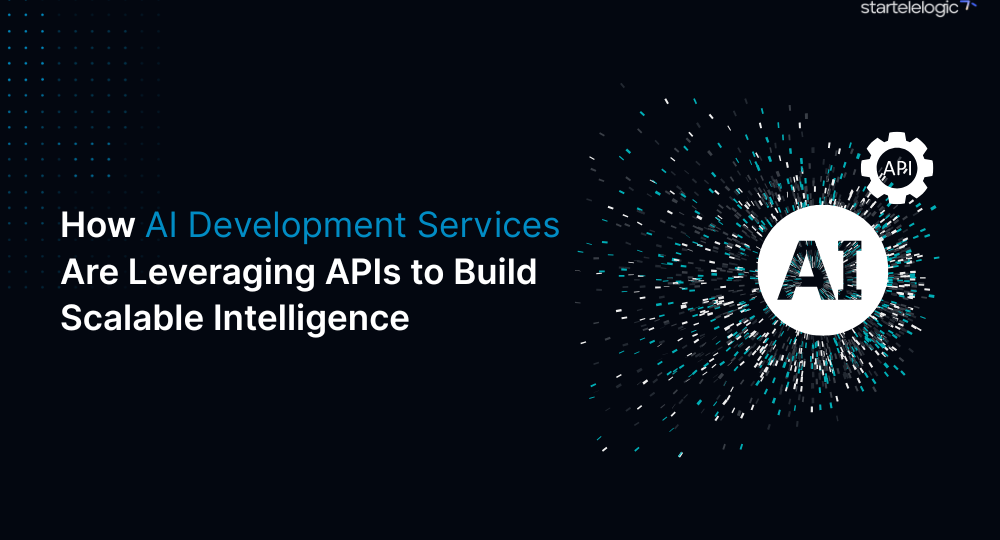The global Artificial Intelligence (AI) market is expected to reach an impressive $1.8 trillion by 2030, growing at a compound annual growth rate (CAGR) of 37.3% from 2023 to 2030. This rapid growth indicates that AI is no longer a futuristic concept—it’s now an essential part of today’s digital world. AI is transforming industries, enhancing operations, and setting new benchmarks for productivity and decision-making. According to Statista, this upward trajectory highlights AI’s pivotal role in boosting efficiency and providing businesses with a competitive edge. Therefore, leveraging AI development services has become crucial for companies aiming to stay ahead in this era of innovation.
Why APIs Are the Backbone of AI Integration
At the heart of this transformation are Application Programming Interfaces (APIs)—the vital links that connect various software systems. APIs make it easier for businesses to incorporate AI capabilities into their applications, enabling them to become more adaptable and scalable in a fast-paced world. As scalability becomes a top priority, APIs are playing a critical role in creating intelligent systems that meet the demands of modern businesses. For instance, companies relying on AI development services often use APIs to streamline implementation and ensure seamless integration of advanced AI features.
APIs Matter in AI Development
APIs are the invisible bridges that allow different software systems to communicate and share data effortlessly. In AI development, APIs enable developers to integrate powerful AI features into existing platforms or build entirely new AI-driven solutions. Consequently, businesses can harness the full potential of AI without reinventing the wheel.
For example, instead of developing a natural language processing (NLP) engine from scratch, AI developers can use pre-built APIs like Google Cloud Natural Language API or IBM Watson NLP API. These APIs come with ready-made features such as sentiment analysis, entity recognition, and text classification. This not only helps developers save time but also reduces costs significantly, making AI development services more accessible to businesses of all sizes.
Building Scalable AI Systems with APIs
One of the biggest challenges in deploying AI solutions is ensuring scalability. Traditional software architectures can struggle to meet the ever-changing needs of businesses. However, APIs offer a more flexible, modular approach that works well with modern microservices architecture—often used in AI development.
Modular Design for Flexibility
By breaking AI functions into smaller, independent modules connected via APIs, developers can create flexible systems that evolve over time. Each module focuses on a specific task, such as speech recognition or predictive analytics. As a result, changes or upgrades to one module don’t disrupt the entire system, making it easier to scale and maintain.
Access to Advanced Technologies
APIs provide businesses access to cutting-edge technologies from top tech companies. For instance, Microsoft Azure Cognitive Services, Amazon Web Services (AWS), and OpenAI offer robust APIs that integrate advanced AI models for tasks like computer vision, language translation, and generative AI. By leveraging these APIs, companies can add high-tech functionalities without investing heavily in research and development—a key advantage of partnering with AI development services.
Cost Efficiency and Faster Deployment
Developing AI models from scratch can be expensive and time-consuming. However, using APIs allows businesses to speed up development and save on costs. APIs eliminate the need for building AI features from the ground up, leading to faster deployment and a quicker return on investment. This cost-effective approach is why many organizations turn to AI development services to implement scalable solutions efficiently.
How APIs Are Revolutionizing Industries
The use of APIs in AI is transforming industries across the board. Here are some examples of how businesses are leveraging APIs for AI-powered solutions:
Telecommunications: AI for Network Optimization and Customer Service
For example, Nokia offers APIs that use AI to optimize network performance in the telecom industry. Telecom companies can monitor network traffic in real-time, detect issues like congestion, and even use AI-powered chatbots to handle customer queries effectively.
Banking and Finance: AI for Fraud Detection
Kount provides AI-powered fraud detection APIs that help banks and financial institutions spot fraudulent transactions. By analyzing transaction data in real-time, these APIs can identify suspicious activities and prevent fraud instantly.
E-Commerce: AI-Powered Personalization
Amazon Personalize uses AI to recommend products based on a user’s preferences and past behavior. E-commerce platforms can integrate this API to create personalized shopping experiences, increasing customer engagement and driving higher sales.
Healthcare: AI for Medical Imaging
Zebra Medical Vision uses AI to analyze medical images, such as X-rays and MRIs, helping doctors detect conditions like cancer, fractures, or heart disease. By integrating APIs from Google Cloud AI and IBM Watson Health, healthcare providers can enhance diagnostic accuracy and speed.
Challenges to Consider
While APIs bring numerous benefits, there are a few challenges to address for smooth implementation:
Data Privacy and Security
APIs often involve sharing sensitive data, which raises concerns about privacy and security. To mitigate these risks, AI development services must use encryption and adhere to regulations like GDPR and HIPAA.
Dependency on Third-Party Providers
Relying on external APIs can make businesses vulnerable to downtime or changes in pricing. To minimize this risk, companies should evaluate multiple API providers and consider hybrid solutions that combine third-party APIs with custom-built components.
Integration Complexity
Integrating APIs into legacy systems can be challenging. Skilled developers are essential to ensure smooth integration and interoperability between new AI features and existing infrastructure.
Conclusion: The Future of AI and APIs
AI and APIs are shaping the future of technology. By leveraging APIs, businesses can create scalable, cost-effective AI solutions that meet their unique needs. From improving customer experiences to optimizing operations, the possibilities are endless. Moreover, as AI continues to grow, APIs will remain a crucial building block for innovation. For businesses, adopting this combination through reliable AI development services is not just a competitive advantage—it’s essential for long-term success and growth in the era of AI.




